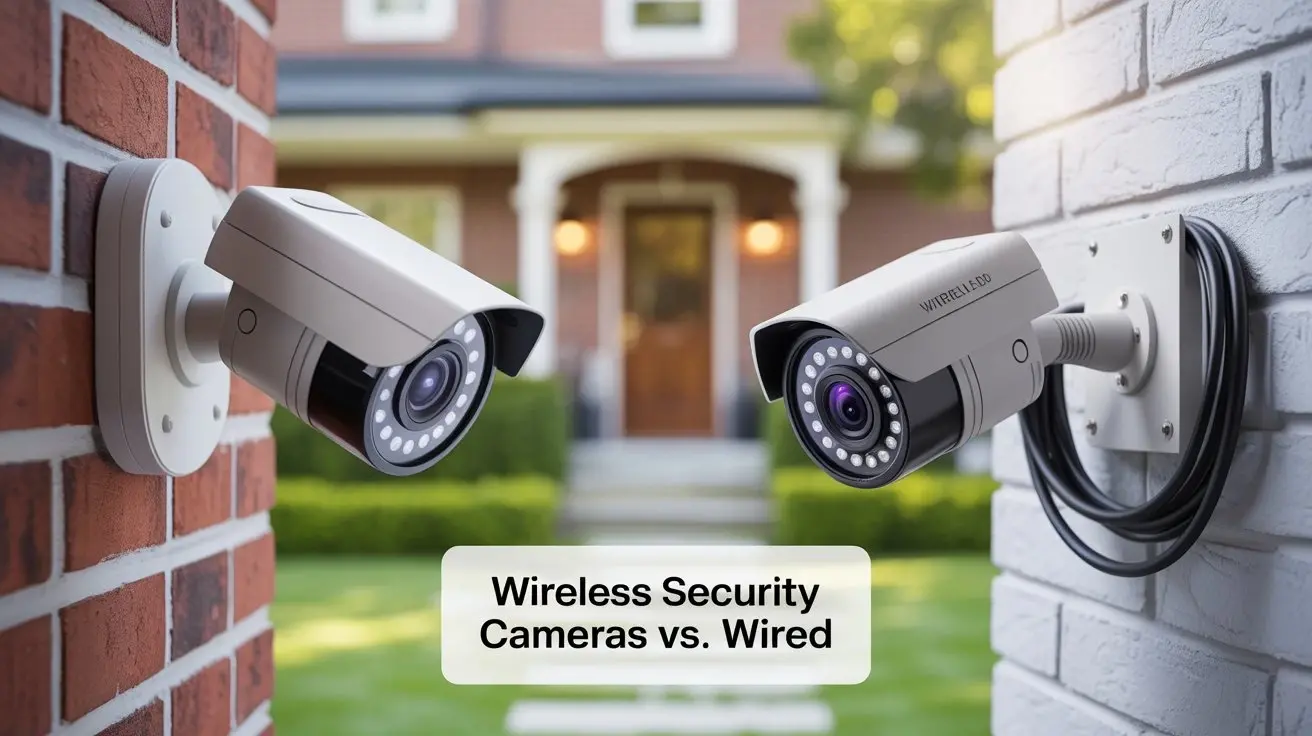Who Is Blink?
Blink is a brand under Immedia Semiconductor, a company acquired by Amazon in 2017, specializing in affordable, wireless, and plug-in smart home security cameras and systems. Known for products like the Blink Mini, Blink Outdoor, and Blink Video Doorbell, Blink has become a leading name in the home security market, offering user-friendly, budget-friendly solutions for monitoring homes and businesses. This comprehensive guide explores Blink’s origins, product offerings, technological innovations, and its role in the smart home security landscape as of 2025.
Origins and Background of Blink
Blink was founded in 2009 as Immedia Semiconductor by a team including Peter Besen, Don Shulsinger, and Stephen Gordon, with a focus on developing low-power, high-definition video technology. Initially, the company aimed to create cost-effective video compression chips for consumer electronics. In 2014, Blink pivoted to the smart home market, launching a Kickstarter campaign for its first wireless security camera, the Blink Home Security Camera. The campaign raised over $1 million, highlighting consumer demand for affordable, easy-to-use security solutions.
In December 2017, Amazon acquired Immedia Semiconductor for approximately $90 million, integrating Blink into its smart home ecosystem alongside brands like Ring. This acquisition allowed Blink to leverage Amazon’s resources, including cloud infrastructure and Alexa integration, to enhance its products and reach a broader market. Today, Blink operates as a subsidiary of Amazon, focusing on delivering accessible security cameras and doorbells that prioritize simplicity, affordability, and long battery life.
Note: Blink’s acquisition by Amazon significantly boosted its growth, enabling seamless integration with Alexa-enabled devices like Echo Show.
Blink’s Product Line
Blink’s product portfolio is designed for both indoor and outdoor security, emphasizing wireless, battery-powered, and plug-in devices. Below is an overview of its key offerings in 2025:
1. Blink Mini and Mini 2
The Blink Mini, launched in 2020, is a compact, plug-in indoor camera priced at $34.99. It features 1080p HD video, motion detection, two-way audio, and a 110-degree field of view. The Blink Mini 2 (2024, $39.99) adds outdoor compatibility with a weather-resistant adapter, color night vision via a built-in LED spotlight, and a wider 143-degree field of view. Both are ideal for small spaces or budget-conscious users.
2. Blink Outdoor 4
The Blink Outdoor 4 (2023, starting at $99.99) is a wireless, battery-powered camera with a two-year battery life on AA batteries. It offers 1080p HD video, enhanced motion detection, two-way audio, and person detection (with a subscription). Its weather-resistant design (IP65) makes it suitable for outdoor use, such as monitoring driveways or backyards.
3. Blink Video Doorbell
The Blink Video Doorbell (2022, $59.99) provides a head-to-toe HD view, two-year battery life, and motion/chime alerts. It integrates with existing doorbell wiring or operates wire-free, offering two-way audio and Alexa compatibility. It’s a cost-effective alternative to Ring’s doorbells.
4. Sync Module Core and Sync Module 2
The Sync Module Core and Sync Module 2 are hubs that enable local storage (via USB or MicroSD) and multi-camera management. They extend battery life for wireless cameras and reduce reliance on cloud subscriptions, priced at $34.99 and $49.99, respectively.
Warning: Some Blink features, like person detection and extended cloud storage, require a Blink Subscription Plan or Sync Module for full functionality.
Key Features and Technology
Blink’s products are built on a foundation of low-power, high-efficiency technology, stemming from Immedia’s expertise in video compression. Key features include:
- 1080p HD Video: All Blink cameras deliver crisp, clear video for day and night monitoring.
- Long Battery Life: Wireless models like the Outdoor 4 run for up to two years on two AA batteries, reducing maintenance. [](https://blinkforhome.com)
- Motion Detection: Customizable zones and person detection (Mini 2 and Outdoor 4, subscription required) minimize false alerts.
- Two-Way Audio: Communicate with visitors or pets via the Blink Home Monitor app.
- Alexa Integration: Control cameras, view live feeds, or arm/disarm systems using Alexa devices like Echo Show or Fire TV. [](https://blinkforhome.com)
- Storage Options: Cloud storage via Blink Subscription Plans ($3–$10/month) or local storage with a Sync Module and USB drive.
- Weather Resistance: Outdoor cameras and the Mini 2 (with adapter) are IP65-rated for durability in rain, dust, or extreme temperatures.
Blink’s proprietary chip technology ensures low power consumption, enabling extended battery life and efficient video streaming, even on 2.4 GHz Wi-Fi networks.
Blink Home Monitor App
The Blink Home Monitor app is the control center for all Blink devices, available for iOS (14.0+), Android (6.0+), and Fire OS (7.0+). It offers:
- Live View: Stream 1080p video for up to 90 minutes (with subscription) or 60 seconds (without).
- Motion Alerts: Receive real-time notifications with customizable sensitivity and zones.
- Multi-System Support: Manage cameras across multiple locations (e.g., home, office) in one app.
- Clip Management: View, save, or share video clips stored locally or in the cloud.
The app’s intuitive interface and Alexa integration make it accessible for beginners, though it lacks support for Google Assistant or Apple HomeKit.
Subscription Plans and Costs
Blink offers flexible pricing with optional subscriptions:
| Feature | Without Subscription | With Subscription |
|---|---|---|
| Live View | 60 seconds (extendable to 5 minutes) | Up to 90 minutes |
| Video Storage | Local (with Sync Module) | Cloud (60 days) |
| Person Detection | Not available | Available (Mini 2, Outdoor 4) |
| Cost | Sync Module ($34.99–$49.99) | $3–$10/month |
The Blink Subscription Plan starts at $3/month or $30/year for one device, with a Plus Plan at $10/month or $100/year for unlimited devices. Local storage via a Sync Module is a cost-effective alternative for users avoiding recurring fees.
Advantages of Blink
Blink’s appeal lies in its accessibility and affordability:
- Low Cost: Cameras start at $34.99, making Blink one of the most budget-friendly smart security brands.
- Easy Installation: Wireless and plug-in designs allow DIY setup in minutes.
- Long Battery Life: Up to two years for wireless cameras, minimizing maintenance.
- Alexa Ecosystem: Seamless integration with Amazon devices enhances smart home functionality.
- Flexible Storage: Choose between cloud and local storage to suit your budget and privacy needs.
Limitations
Despite its strengths, Blink has some drawbacks:
- Subscription Dependency: Advanced features like person detection and cloud storage require a subscription or Sync Module.
- Limited Smart Home Support: Only integrates with Alexa, not Google Assistant or Apple HomeKit.
- Basic AI Features: Lacks advanced capabilities like facial recognition, available in competitors like Google Nest.
- Wi-Fi Dependency: Requires a strong 2.4 GHz Wi-Fi signal, which may limit performance in large homes.
- Power Constraints: Plug-in models like the Mini require a nearby outlet, limiting placement.
Warning: Secure your Blink account with multifactor authentication to protect against unauthorized access to your footage.
Use Cases
Blink’s products cater to a variety of scenarios:
- Small Homes/Apartments: The Blink Mini is perfect for renters or small spaces due to its compact size and low cost.
- Outdoor Monitoring: The Outdoor 4 and Mini 2 (with adapter) are ideal for driveways, backyards, or porches.
- Front Door Security: The Video Doorbell offers affordable visitor monitoring and chime alerts.
- Budget Security: Blink’s low prices and optional subscriptions appeal to cost-conscious users.
- Alexa Smart Homes: Enhances ecosystems with Echo devices for voice-controlled security.
Comparison with Competitors
Compared to rivals like Ring, Wyze, and Arlo, Blink offers competitive pricing but simpler features. Ring provides broader smart home integration but requires subscriptions for most features. Wyze’s cameras (e.g., Wyze Cam OG, $23.99) offer free local storage and 2K resolution, while Arlo’s 4K cameras cater to premium users. Blink’s strength lies in its affordability, long battery life, and Alexa compatibility, making it a middle-ground option.
[](https://www.amazon.com/stores/Blink/page/C5DECBBE-4F56-4C36-B933-E62144578691)
Privacy and Security
Blink prioritizes user privacy with end-to-end encryption for cloud footage, multifactor authentication, and customizable privacy zones to avoid recording sensitive areas. Regular firmware updates address vulnerabilities, but users should secure their Wi-Fi networks and use strong passwords to prevent hacking.
Conclusion
Blink, a subsidiary of Amazon’s Immedia Semiconductor, is a leading provider of affordable, user-friendly smart home security cameras and doorbells. Since its founding in 2009 and acquisition in 2017, Blink has grown from a Kickstarter success to a key player in the security market, offering products like the Blink Mini, Outdoor 4, and Video Doorbell. Its strengths include low costs, long battery life, and seamless Alexa integration, though it lacks advanced AI and broad smart home support. For budget-conscious homeowners, renters, or Alexa users seeking reliable security in 2025, Blink delivers an accessible, effective solution with flexible storage options and easy DIY setup.






